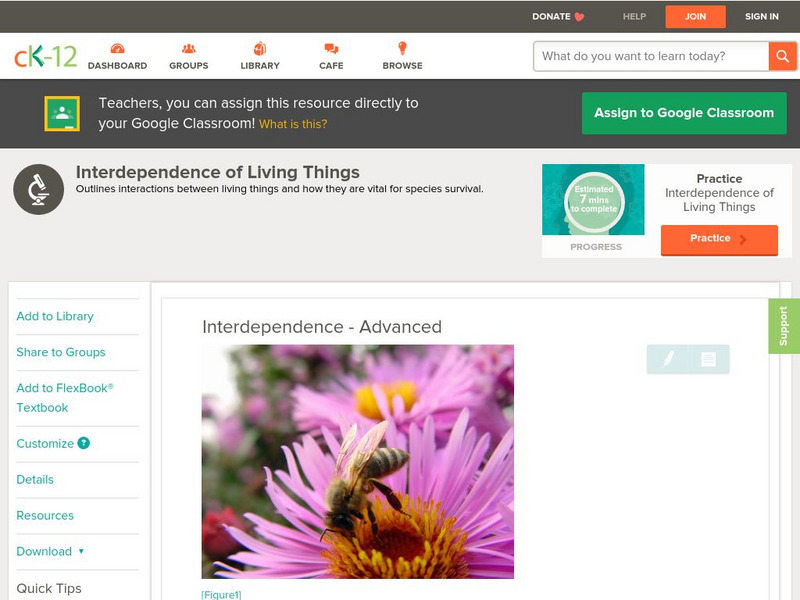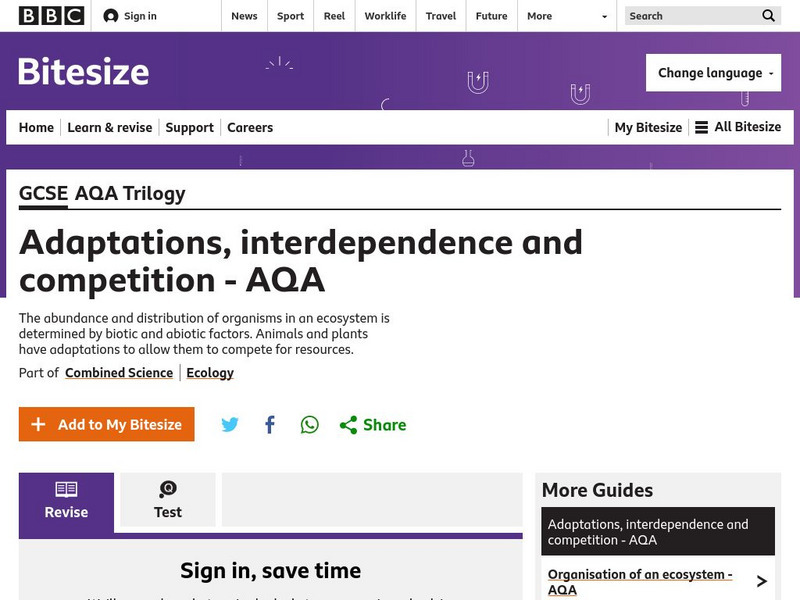Hi, what do you want to do?
Curated OER
Keeping Healthy
Young scholars review what the heart does and why the muscles in the body need oxygen. As a class, they measure their pulse rate while they are resting and after they have jogged for three minutes. They are helped by their teacher to...
Curated OER
Grouping and Changing Materials
Students feel and observe different types of materials. Using the internet, they sort objects based on the materials they are made from and justify their reasons for putting it in a certain category. They identify objects that could...
Curated OER
Using electricity
Students explore how a switch can be used to break a circut. Students construct a simple series circuit and use it for a purpose. Students read the "The Lighthouse Keeper's Lunch,or one of the "Katie Morag" stories which clearly shows...
Curated OER
Helping plants grow well
Learners explore the effect of water, temperature and light on plant growth. Students are asked if they remember the LAW for plants. This is Light, Air(temperature) and Water, which all plants need for growth. Learners are divided...
Curated OER
Life cycles
Students identify and explain the parts of a flower and their role in the life cycle of flowering plants, including pollination, seed dispersal, and germination. Students recap the following information: that plants need light, warmth,...
Curated OER
Changing Sounds
Learners identify how the pitch of an instrument can be altered. They complete a worksheet by labeling several images in order of pitch and then fill a bottle with water to create a sound that matches a pitch on a drawn card.
Curated OER
Gases Around Us
Pupils participate in a whole class discussion about solids, liquids, and gases. Students get involved in a teacher-directed experiment related to solids, liquids, and gases. Pupils complete worksheet, writing the names of the parts of...
Curated OER
Changing State
Young scholars identify the changing states of water, water vapor and ice in the water cycle They investigate how each of these stages can be reversible. Students complete a worksheet describing the water cycle.
Curated OER
Circuits And Conductors
Learners predict the common classroom items, such as paper clips, chalk, keys, or erasers, that will be good conductors in a circuit. They build circuits using a variety of circuit diagrams to test their predictions.
Curated OER
Exploring the Maryland State Archives Website
Student demonstrates the ability to organize, manage and comprehend information and applies appropriate skills to collect organize, and interpret data, They then explore an appreciation of media a sources of information and recreation.
Curated OER
Native American Poetry
Fourth graders locate the poetry section of the LMC. They produce a hand written transparency based on the poem Hiawatha by Henry Wadsworth Longfellow. Students illustrate a poem from their poetry section. It is a mystery to them what...
Curated OER
The Legend of the Indian Paintbrush: Native American Life
Students read," The Legend of the Indian Paintbrush" by Tomie dePaola and discuss the way legends are passed down orally. They then create their own legend and illustrate it on a simulated "Buffalo Skin" made from brown paper.
Curated OER
MONGOLIAN WOMEN - THEN AND NOW
Students are introduced to the history of Mongolia. This is a general overview before going into the real detail of the lesson. The main focus is upon the development of the women of Mongolia and the major contributions they have made.
Curated OER
Making a Food Web and Learning About Ecosystems
Third graders examine the difference between a food web and food chain. They also examine the importance of the sun in a food web and food chain. Students understand what happens when you remove parts of the chain.
Curated OER
Aphids and Ladybirds
Students record observations of ladybird beetles and aphids. They develop questions concerning the behavior of ladybird beetles and aphids that are testable by a classroom experimentation. Students develop an investigation.
Curated OER
The Marshall Plan And The Reconstruction Of Europe
Third graders investigate various aspects that are associated with the history of Maryland. They look at the establishment of America as becoming a superpower. They conduct research using the text provided. The students gather the...
Curated OER
Human Rights Issues Around the World
Seventh graders begin the lesson by comparing and contrasting the Bill of Rights with the Universal Declaration of Human Rights. For each document, they highlight the material that is the same for both and discuss the items that are...
Curated OER
Teeth and Eating
Students explore animal diets and teeth. In this animal science lesson, students view photos of animals and their teeth. Students identify the type of diet the animal has based on the teeth. Students are introduced to the terms...
CK-12 Foundation
Ck 12: Biology: Interdependence of Living Things
[Free Registration/Login may be required to access all resource tools.] Covers interactions between organisms.
BBC
Bbc: Gcse Bitesize: Adaptations Adaptations, Interdependence and Competition
Organisms depend on each other for survival. This is called interdependence. Both living and non-living factors will affect the abundance and distribution of organisms in a habitat. Included is a link to a test.
BBC
Bbc: Gcse Bitesize: Adaptations, Interdependence and Competition
This lesson focuses on how plants and animals live together in a community or ecosystem by adapting, interdependence, and competition.
BBC
Bbc: Gcse Bitesize: Adaptations, Interdependence and Competition Aqa
The abundance and distribution of organisms in an ecosystem is determined by biotic and abiotic factors. Animals and plants have adaptations to allow them to compete for resources.
University of Utah
University of Utah: Learning Center: learn.genetics: Great Salt Lake Food Web
Visualize how energy transfer takes place in two linked food chains, and how it demonstrates the interdependence organisms of the Great Salt Lake.
Other
Ohio Department of Education: The Long and Short Story of Ecological Succession
An ecology simulation where each student plays a role of an organism in an forest ecosystem. Students earn and keep track of their own survival points to determine which type of organism is most successful at survival during different...




























